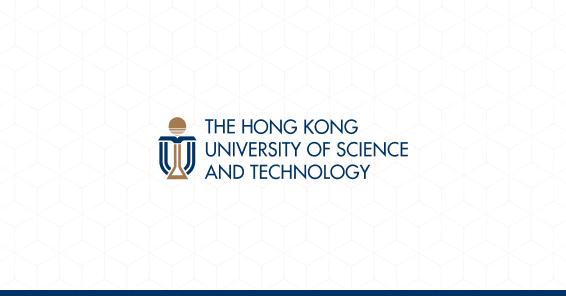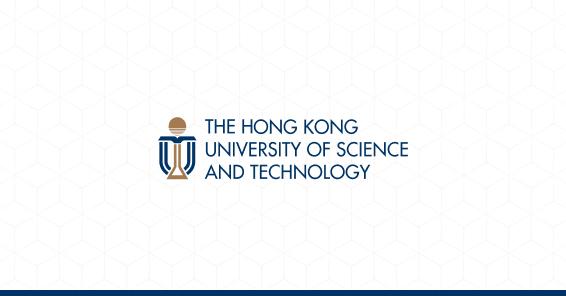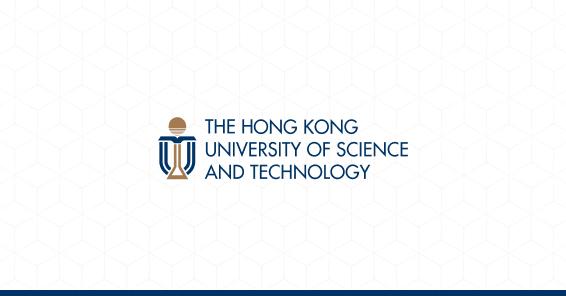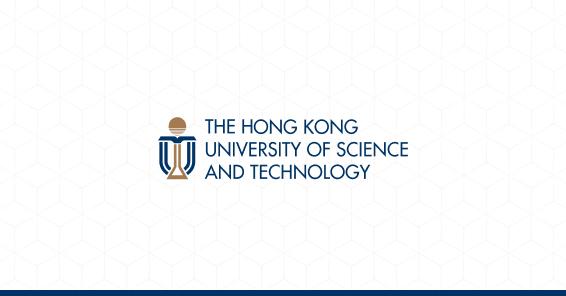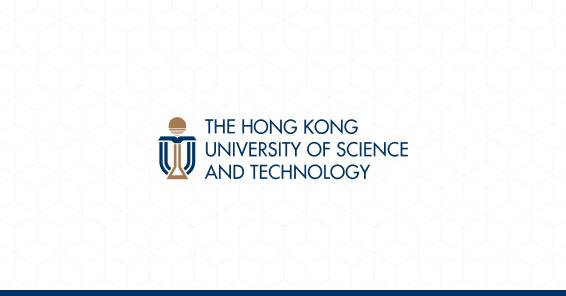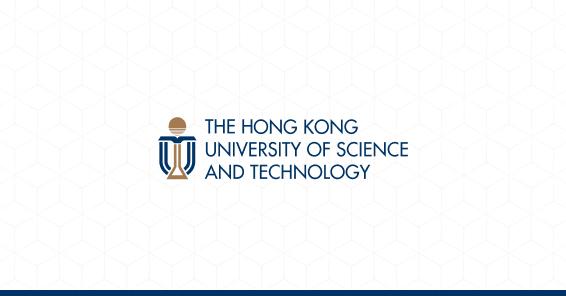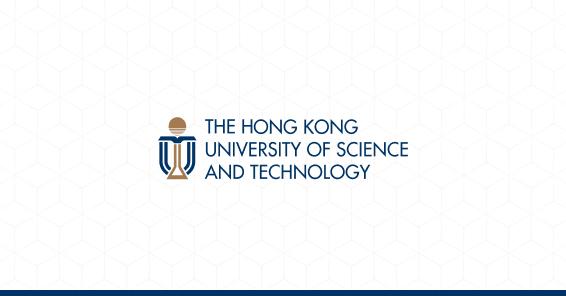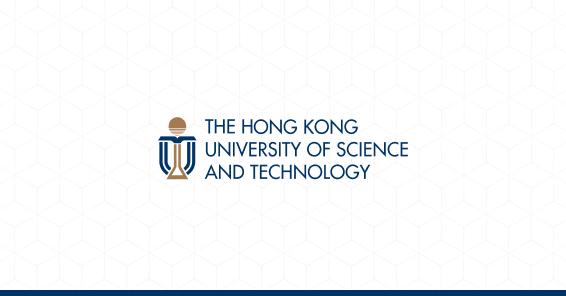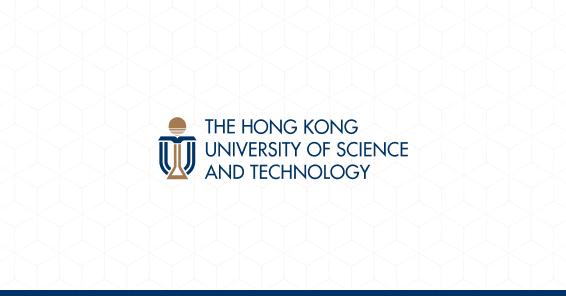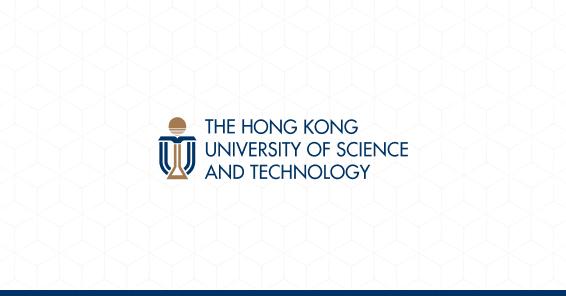News & Events
2010-10-14
32 Doctoral Students from 11 Nationalities Admitted to HKUST through Hong Kong PhD Fellowship Scheme
The Hong Kong University of Science and Technology (HKUST) has admitted 32 doctoral students from 11 nationalities across 4 continents to pursue PhD programs under the Hong Kong PhD Fellowship Scheme (HKPFS) offered by the Research Grants Council (RGC).
This is the first year HKPFS is introduced and among the 106 students awarded scholarships 32 has opted to study at HKUST – the largest number among local tertiary institutions.
“We are delighted that as much as one-third of the Fellowship awardees coming to Hong Kong have opted for HKUST. This testifies to the well-deserved reputation that our University enjoys in global academia, particularly in our strength in research. We are fully committed to providing these students with a quality education that will benefit them for life,” said HKUST Provost Prof Wei Shyy.
The students admitted to HKUST this year represent 11 nationalities – namely China, Korea, Malaysia, Singapore, India, Iran, Greece, the Czech Republic, Germany, Nigeria and the USA.
8 of them are in the Department of Electronic and Computer Engineering, 6 in Computer Science and Engineering, 5 in Physics, while the others are in other Science and Engineering disciplines, apart from one who is in Humanities.
Mr Adetoyese Olajire Oyedun, from Nigeria, is pursuing research in bio-diesel and mixed waste treatment. “I have a keen interest in this area because with the continued growth in global population and the consequential increase in the demand for fuel and waste management, the issues are causing grave concern. I trust that my research work at HKUST will enable me to make contribution to humankind,” he said.
Mr Xiaolong Chen, from Mainland China, is pursuing research into nano science. He noted, “Nano science and technology is a cutting edge discipline, and one of the renowned areas of excellence at HKUST. It is also a research area that will bring fundamental improvements to the life of people all over the world. I do hope that my research will contribute towards advance in this discipline.”
More information about applying for admission to HKUST through the Hong Kong PhD Fellowship Scheme is available through this link: http://pg.ust.hk/hkpfs/web/index.php
Read more
2010-08-20
The Hong Kong University of Science and Technology (HKUST) announced today the appointment of Professor Henry Tye (戴自海教授) as Director of the Institute for Advanced Study (IAS) with effect from January 2011.
A distinguished theoretical physicist and cosmologist, Prof Tye’s primary research interest is in elementary particle theory, including topics such as high energy phenomena, interface between particle physics and cosmology and superstring theory. He is known for his contribution to the inflationary universe scenario, which is generally accepted as the way our universe began. Prof Tye is a world renowned scientist whose primary accomplishment in recent years has been on the “brane world” scenario, a new description of the universe that emerges naturally in the superstring theory.
HKUST President Tony F Chan remarks, “We take pride in having Prof Henry Tye, a distinguished scientific leader, assume the directorship of the Institute for Advanced Study. He brings to this post a wealth of experience in the world’s leading scientific bodies, including on the advisory board of advanced scientific research institutes. He amply shares the University’s values for education and research excellence. We are sure that with Prof Tye’s leadership, the IAS will further its missions of serving as a catalyst for frontier research and major scientific and technological advances, as well as for building a regional and global intellectual center.”
Prof Tye is currently Horace White Professor of Physics at Cornell University. He received his B.S. degree from the California Institute of Technology in 1970 and his PhD degree in Physics from the Massachusetts Institute of Technology in 1974. Upon graduation, Prof Tye spent the early years of his career in leading research groups at Stanford University, Fermi National Accelerator Laboratory, and Cornell University. Since 1987, he has been Professor of Physics at Cornell University where he spent the last 23 years of his academic career. Prof Tye is a Fellow of the American Physical Society, served as Chair of the National Advisory Board of the Kavli Institute for Theoretical Physics China in Beijing since its establishment in 2007, and is a Member of the International Advisory Committee for the Institute of Theoretical Physics of the Chinese Academy of Sciences.
Prof Tye has been closely associated with the HKUST. He gave two distinguished lectures on “How Our Universe Began – String Theory Perspective” and “The Birth of Our Universe: an Overview of Cosmology” at the IAS in 2006 and 2009 respectively.
Read more
2010-08-03
About 280 talented youngsters aged from 10 to 19 have gained new insight into their interests and potentials in two 3-week summer programs held at the Hong Kong University of Science and Technology (HKUST).
These youngsters come from some 20 nationalities across four continents. While their national origins differ, they have one thing in common – their superior intelligence. All of them have been tested in their intellectual abilities and found to be among the top three percent.
Both of the programs are co-organized by HKUST and the Johns Hopkins University Center for Talented Youth (CTY) – one of the world’s top institutions set up to identify talented children and help them reach their full potentials.
The program for the younger children – for pupils from Grades 5 to 9 or equivalent – is the CTY Hong Kong Program. This is the first year the program is held in Hong Kong. A total of 187 students from 12 countries or territories took part.
The courses in the program include cryptology, mathematical logic, mathematical modeling, probability and game theory, fundamentals of computer science, fast-paced upper school chemistry, electrical engineering, introduction to biomedical sciences, crafting the essay, inductive and deductive reasoning, science and engineering, and writing and imagination.
The program for older children – for pupils from Grades10 to 12 or equivalent – is the Talented Youth Summer Program 2010. As many as 92 youngsters from 18 nationalities or territories enjoyed the challenge.
The course covered biotechnology, game theory, global climate change and energy issues, human nature and technology, physics and conservation laws, and critical thinking.
Tony Lam, Head of the CTY Hong Kong Program at HKUST, said, “I was amazed how these gifted youngsters from different parts of the world could interact and inspire each other – something they can’t do in an ordinary class. This is the magic of the learning platform provided by these programs.”
Read more
2010-07-26
Five Hong Kong secondary students trained by the Hong Kong University of Science and Technology (HKUST) achieved brilliant results at the 41st International Physics Olympiad (IPhO) in Croatia, amassing one gold, one silver and three bronze medals. Among the students is a secondary four student, the youngest contestant ever representing Hong Kong in the IPhO.
The Hong Kong Team, led by HKUST Physics faculty Prof Chen Tian-wen and Prof Du Sheng-wang, returned to Hong Kong today with great honor. The five team members were selected from among the best achievers in the Hong Kong Physics Olympiad 2009, to receive a series of enhancement training courses offered by the HKUST.
Members of the Hong Kong Team and their medals are as follows:
Name
Level
School
Medal
Jonathan Ma Han-son
S6
Sing Yin Secondary School
Gold
Andy Loo
S4
St. Paul’s Co-educational College
Silver
Tsang Hok-kan
S6
Shun Tak Fraternal Association Leung Kau Kui College
Bronze
Laurence Leung Yik-lok
S6
King’s College
Bronze
Tang Wai-ho
S6
Baptist Wing Lung Secondary School
Bronze
This is the seventh year since 2004 that HKUST was appointed by The Hong Kong Academy for Gifted Education (HKAGE) to provide training for Hong Kong students selected for the IPhO.
“The performance of the Hong Kong team this year is very encouraging. It is rare that a secondary four student is selected to represent Hong Kong in this important event and we are delighted that he even received a medal. HKUST will continue to nurture brilliant students with great potential,” said Prof Chen Tian-wen of HKUST, leader of the Hong Kong team this year.
The IPhO this year was held from 17 to 25 July in Croatia, with about 400 contestants from 82 countries/regions participating. The brilliant achievement this year represents the fruitful co-operation among the Education Bureau, the HKAGE and the HKUST.
Read more
2010-04-26
The Hong Kong University of Science and Technology (HKUST) is pleased that its invention of the Personal Response System (PRS) or the device generically-referred to as “clickers”, the first universal classroom learning tool invented, is now widely used by global universities and institutions.
The Personal Response System (PRS) was invented by a team led by Prof Nelson Cue, then Head of the Physics Department at HKUST. Using the tool aimed to promote active learning, students in a classroom or lecture theater can respond to questions posed by the instructors with a click of a button, all at the same time. It helps instructors to instantly assess students’ understanding of the subject matter and to collect instant feedback from every student. A histogram of class response can be plotted and shown to the class. Most importantly, it helps students participate actively in class.
“One of the beauties of the PRS is helping shy and disadvantaged students to be proactive,” said Prof Cue, now Professor Emeritus of Physics at HKUST. “Inspired by a commercial system Classtalk System, we aimed to build a more user-friendly, affordable and easy-to-use student response system which could be used in any discipline. Our system was meant to be used easily in any classroom from elementary school to postgraduate in any country – and it would be affordable for developing countries. Thus instead of regular networking which was expensive, we settled on television infrared remote control technology which was pervasive and cheap. With a grant from the Hong Kong Government and involving a local company Varitronix, we designed the affordable, time-saving, easy-to-use, scalable and wireless Personal Response System – the first universal classroom learning tool in 1997,” said Prof Cue. A US patent on this infrared system filed in 1997 was approved in 2001.
PRS is now used in all major tertiary institutes in Hong Kong, close to 40 secondary schools, as well as a number of government institutions and multinational corporations. The tool helped HKUST’s Department of Physic to promote the “Question-Centered Approach”, a campaign targeting students of local secondary schools to encourage interactive learning with funding from the Quality Education Fund.
Top-view Tools (TvT), a simpler and more affordable version of “clickers” targeting China and neighboring areas, are being developed.
PRS has become widely used by universities and institutions worldwide since 1998. With the invention of PRS, HKUST is one of the pioneers of the family “clickers” which are now widely used around the world.
According to a Canadian newspaper, “clickers” have been introduced to the University of British Columbia (UBC) by Prof Carl Wieman, 2001 Nobel Laureate in Physics who was recently nominated for the key position of associate director of science in the White House Office of Science and Technology Policy.
According to Prof Simon Peacock, Dean of Science at UBC, Prof Wieman’s focus at UBC was helping to introduce “innovations into the classroom that have improved students’ understanding of complex scientific concepts”.
Prof Peacock was quoted in an interview with the Vancouver Sun last month, “One of the most effective [innovations for the classroom] is the use in large lecture halls of “clickers” that allow professors to get instant feedback from hundreds of students by having them answer multiple-choice questions on hand-held services. When used correctly, they can be an incredible feedback mechanism in engaging students and enhancing student learning.”
Prof Nelson Cue earned a PhD in Physics in 1967 from the University of Washington, Seattle, USA. He joined the Physics Faculty at State University of New York /Albany in 1970 and became the Founding Head of Physics at HKUST in 1990. He had served as the Associate Vice President for Academic Affairs for Postgraduate Program for three and a half years. He was Chair Professor of the Physics Department before his retirement in 2007. He was also the Founding Director of the HKUST College of LifeLong Learning (CL3) in 2000. More recently, he developed and directed the Talented Youth Summer Program that has been in operation since 2008.
Read more
2010-04-22
Professor Kwing-lam CHAN recently achieved breakthrough in analyzing the data obtained from China’s first lunar probe, Chang’e-1. He was invited by China National Space Administration (CNSA) to join the first Chinese lunar satellite research in 2007. The analysis result will be published in Earth and Planetary Science Letters and Prof Chan is the first Hong Kong scholar to publish Chang’e-1 data analysis results in an international journal.
In Hong Kong, including Prof Chan’s research team, there are four groups taking part in Chang’e-1 data analysis research. Chang’e-1 achieved the first 3-D lunar imaging in the world and used microwave to measure the thickness of lunar regolith. From the microwave data, Prof Chan found that there were microwave “black spots” spread over the lunar regolith, with great temperate difference between day and night. In addition, the microwave data confirmed that the temperature variation of the lunar regolith under dozens of centimeters was relatively small (around minus 48 degrees Celsius near the equator region, warmer than the winter of Alaska). Human beings can live under such temperatures.
Prof Chan believed that such findings will be of great help to China’s lunar landing in the future and predicted that Chinese astronauts would be able to land on the Moon in the coming two decades. He also pointed out that the rich reserve of Helium-3 on the moon was adequate for the our use for 10,000 years.
This research was solely funded by HKUST’s School of Science for HK$320,000 and the first stage of research was completed.
Prof Kwing-lam CHAN is a prominent astrophysics and was a former NASA researcher. He obtained his doctoral degree in Princeton University in 1974. His research interests include Astrophysics and Space Science, Solar, Planetary and Lunar Research, and Computational Fluid Dynamics. He joined HKUST in 1994 and is currently a professor in the Department of Mathematics.
Read more
2009-12-08
The Hong Kong University of Science and Technology (HKUST) today launched a university-wide community engagement program in preparation for the implementation of the 4-year undergraduate curriculum in 2012. Called “HKUST Connect”, it involves the entire university community – students, faculty and staff members – in a well-coordinated effort to develop sustainable partnerships with the community at large.
Dr Rosanna Wong Yick-Ming, Executive Director of The Hong Kong Federation of Youth Groups, said at the launching ceremony, “I have always believed that education serves a public purpose. This is because putting knowledge to work is how a society progresses. For this reason I find HKUST Connect a very exciting and relevant process which nurtures in students a desire to engage in the community through responsible and civic endeavors, while also strengthening their commitment to service. On these foundation stones rest Hong Kong’s successful and sustainable development.”
HKUST President Tony F Chan said, “HKUST Connect is significant in three dimensions – Conscience, Consolidation, and Commitment”.
“First, HKUST Connect represents a united conscience for advancing justice, hope and basic goodness. Second, it is a consolidation of efforts from different levels of the university for one common purpose – to promote the well-being of self and others through an integration of service and learning. Finally, it signifies the University’s continued commitment to community engagement involving lasting relationships,” President Chan said.
Prof Kar Yan Tam, Dean of Undergraduate Education, said, “The mandate of HKUST Connect is to nurture engaged learners who take charge of their own learning and actively apply their human capital to address community needs and social issues.”
To facilitate students’ personal advancement and ride on their passion, the University has adopted a graduate-student mentoring model in developing community engagement initiatives.
In putting this model into practice, a group of 2009 HKUST graduates have been hired to join HKUST Connect as Service Learning Co-ordinators responsible for project planning and implementation.
Miss Ren Leung is one of the Service Learning Co-ordinators. A Physics graduate, she was inspired to take up this post by her own experience in social service.
“One of the most life-changing experiences for me was taking part in the Sichuan Social Service Program in June this year with 40 other HKUST students and staff, to provide service to the victims of the Sichuan Earthquake last year. After the trip, I realized that it is not a matter of whether we can contribute to society, but how we would like to contribute. Being a Service Learning Co-ordinator is, I think, the best way I can make a contribution,” she said.
The Sichuan Social Service Program was organized by a group of committed students and staff, in which Mr He Yuheng, 2009 Physics graduate, was a key player.
Mr He was also the recipient of the first “Roy To Community Service Award”, also presented at the ceremony. He is at present staying at HKUST to pursue his MPhil studies. A student from the Mainland, Mr He played a key role in organizing service trips to Sichuan and various parts of Guangdong. Apart from being committed to social service, Yuheng was also a top student – not only did he graduate with first class honors, but he was one of only seven students in the School of Science to be presented the Academic Achievement Award.
The “Roy To Community Service Award” was set up in memory of HKUST alumni Mr Roy To, who lost his life in a car accident in Inner Mongolia during a service trip in May 2008. The Award is presented annually to the student in HKUST who best exemplifies the commitment to community service.
HKUST Connect is funded by the University Grants Committee and the private sector, including a donation from Mr Senta Wong, Chairman and CEO of Wong’s Kong King International (Holdings) Limited.
About HKUST Connect
HKUST Connect is an initiative set up to mobilize the entire university to build on existing efforts in raising civic awareness, and be actively engaged in learning and service activities for the benefit of the community. Students will connect their service with their academic experiences and realize their unique role in the community. Faculty and staff will facilitate these activities to enhance student learning as well as deepen their own commitment to education with a public purpose. The University will collaborate with community organizations, education institutions and corporations to organize meaningful projects that assist, inspire and build up their recipients.
Read more
2009-07-22
Five Form 6 students trained by the Hong Kong University of Science and Technology (HKUST) have scored the best results ever for Hong Kong at the 40th International Physics Olympiad in Mexico from 12 to 19 July 2009, netting one gold, two silver and three bronze medals.
These students are participants in the “Support Measures for the Exceptionally Gifted Students Scheme” of the Education Bureau, and have won awards at last year’s Hong Kong Physics Olympiad. On completion of a one-year training program provided by HKUST’s Physics Department and having gone through a series of challenges, they were selected to take part in this international competition.
This year’s International Physics Olympiad attracted over 70 competing teams from different countries and regions, with each team comprising five members.
Prof Tai-Kai Ng, HKUST Associate Dean of Science and Head of the Physics Department, was very pleased with the students’ performance this year. He said that as Mexico was one of the countries affected by swine flu, the Hong Kong team had to overcome numerous hurdles before they could make the trip there, and this made the achievement all the more remarkable. He said that the Science School hoped to develop even more promising secondary school students, and this year, there will be another several dozen secondary school students taking HKUST’s one-year training program in preparation for next year’s International Physics Olympiad.
List of Winners from Hong Kong in the International Physics Olympiad 2009
Name
Award
School
Yu Lik Hang
Gold
SKH Lam Woo Memorial Secondary School
Poon Ting Fung, Jeffrey
Silver
Sing Yin Secondary School
Lam Kin
Silver
Sing Yin Secondary School
Lee Tak Yan
Bronze
SKH Lam Woo Memorial Secondary School
Yeung Wing Ki
Bronze
STFA Leung Kau Kui College
Read more
2009-04-18
HKUST MPhil student of Physics Tsui Lok Man became the only candidate from Hong Kong to have won a fully-funded scholarship for the Perimeter Scholars International (PSI) program, a 10-month concentrated Master degree program jointly organized by the world-renowned Perimeter Institute for Theoretical Physics (PITP) and the University of Waterloo in Ontario, Canada.
For this honor, Lok Man has to compete against 200 international applicants, becoming one of 25 eventual scholarship winners from 15 countries/regions for this inaugural program. Due to start in August 2009, the program aims to attract budding physicists from around the world and nurturing them to become theoretical Physics researchers contributing to future cutting-edge discoveries.
Lok Man is elated by his success, “I am excited at being offered this once-in-a-lifetime opportunity to learn from some of the world’s most celebrated Physicists, ” he said. Through this program he hopes to develop better understanding in two areas of Physics of interest to him – String Theory and Quantum Gravity – leading to the identification of research topics for later studies.
“I feel tremendously indebted to the professors at HKUST especially Physics Professors Yang Zhiyu and Szeto Kwok Yip. Prof Yang coached us to take part in various Physics Olympiad tournaments. Without his guidance we would not have fared so well in the tournaments. Prof Szeto has given me invaluable advice in my undergraduate research project. I thank them and all other professors for the learning opportunities offered and the wise consul and advice given,” said Lok Man.
The Perimeter Institute for Theoretical Physics was founded 10 years ago as a leading centre in theoretical physics. It provides a multi-disciplinary environment for fostering scientific collaboration in research areas of cosmology, particle physics, quantum foundations, quantum gravity, quantum information, superstring theory and related disciplines.
The center is staffed by an award-winning faculty and 10 Distinguished Research Chairs, including eminent physicists who have made significant contribution to some of the most exciting research areas in Physics. Its glittering faculty includes Prof Stephen Hawking of University of Cambridge, Wolf Prize Winner Yakir Aharonov of Chapman University in the States, and Xiao-Gang Wen of MIT, some of them will be involved in teaching the Perimeter Scholars International Program.
Currently an MPhil student in Physics at HKUST, Lok Man is a first-class-honour graduate in Physics and Mathematics. Admitted through the Early Admissions Scheme in 2005, he impressed HKUST’s Admission Panel with his precocious ability in Physics, amply demonstrated in his performances at various Physics Olympiad tournaments. He was crowned the gold medal in the 2005 International Physics Olympiad held in Spain involving student representatives from 75 countries/regions.
With this fully funded scholarship, Lok Man will be able to learn and exchange with budding physicists from around the world including Australia, Cameroon, Canada, China, Cuba, France, India, Iran, Ireland, The Netherlands, Poland, South Africa, UK and USA.
Read more
2008-06-03
Prof Alan Heeger, Nobel Laureate in Chemistry in 2000, today (Friday) unveiled to a packed lecture hall at the Hong Kong University of Science and Technology the secrets of “plastic solar cells” with the world’s highest energy efficiency rating for such cells made with organic materials.
This was part of a series of Distinguished Lectures hosted by the University’s Institute of Advanced Study.
“I am excited to have led a research team that created a new low-cost ‘tandem’ organic solar cell with 6.5% efficiency, the highest record for solar cells made with organic materials. This technology is now under active development toward commercialization, and is expected to have significant contribution to meeting the energy needs of our planet in the future.” said Professor Heeger.
Prof Heeger is currently Professor of Physics at the University of California at Santa Barbara and Director of the Institute for Polymers and Organic Solids. Together with two other professors, Prof Heeger won the Nobel Prize in Chemistry for his contributions to the discovery and development of conductive polymers.
Prof Heeger is also a Fellow of the American Physical Society and a Member of both the National Academy of Sciences and the National Academy of Engineering.
Read more
